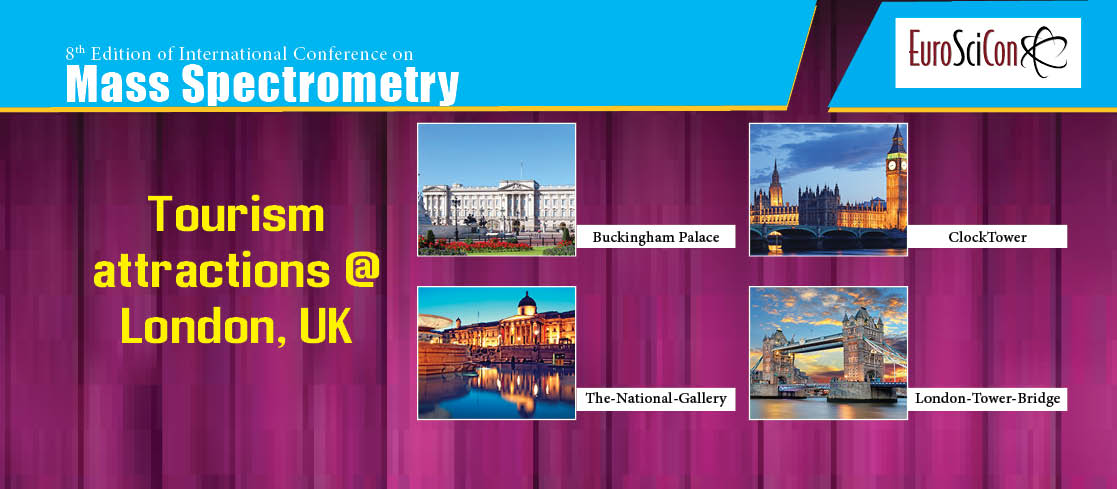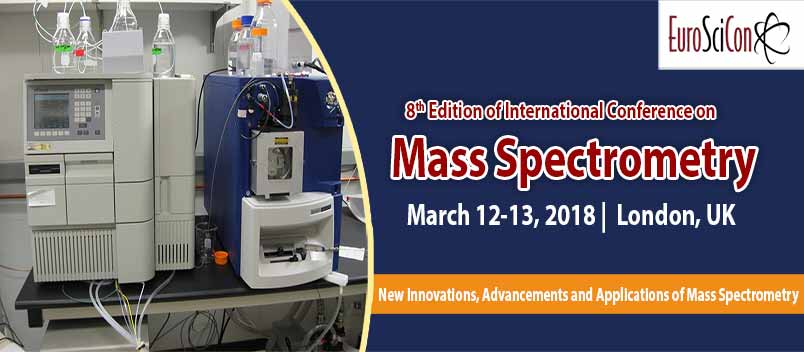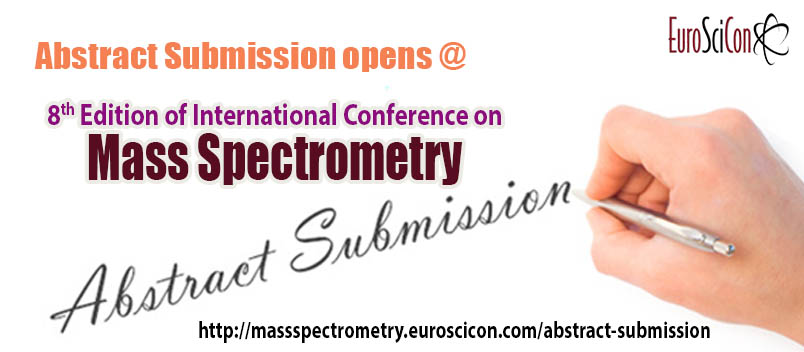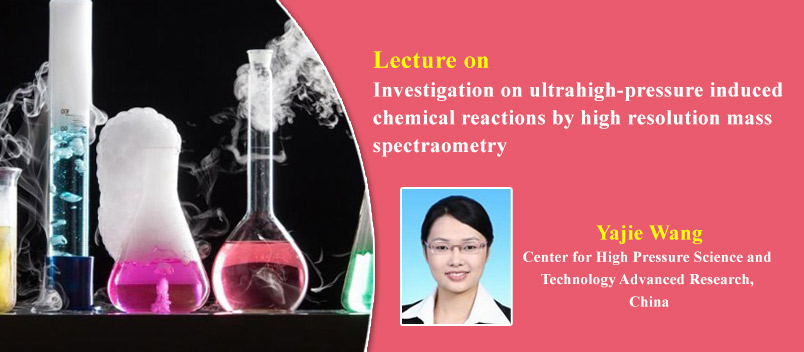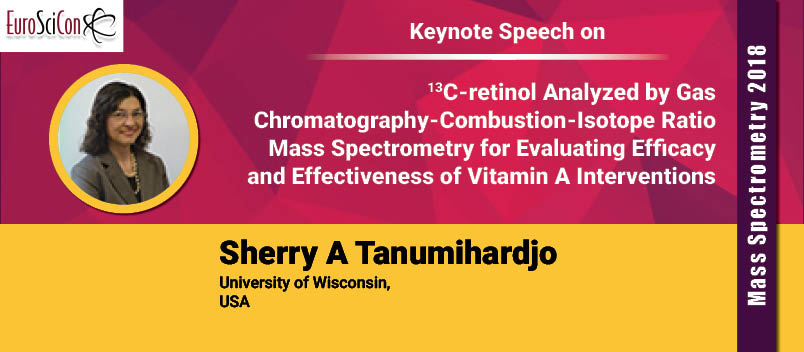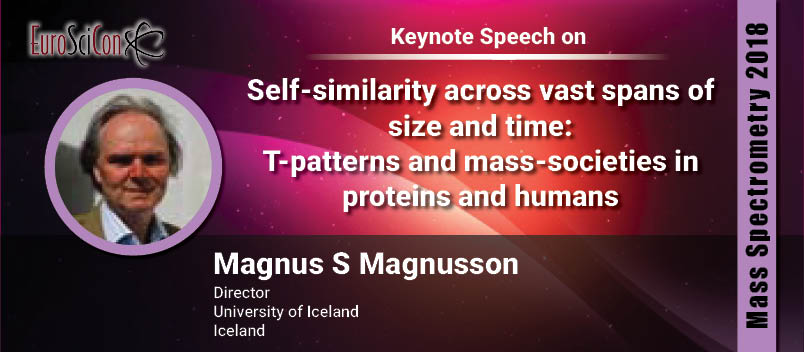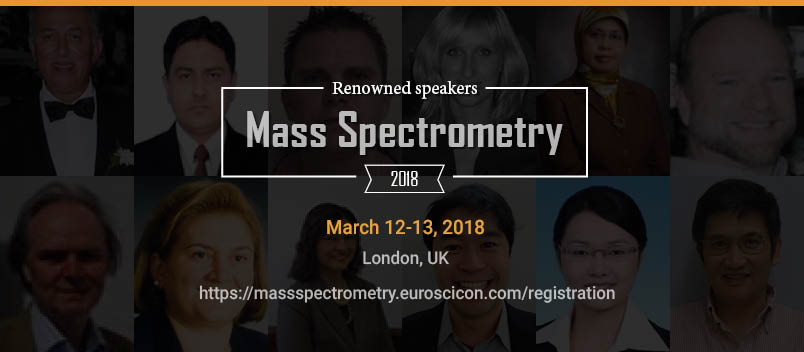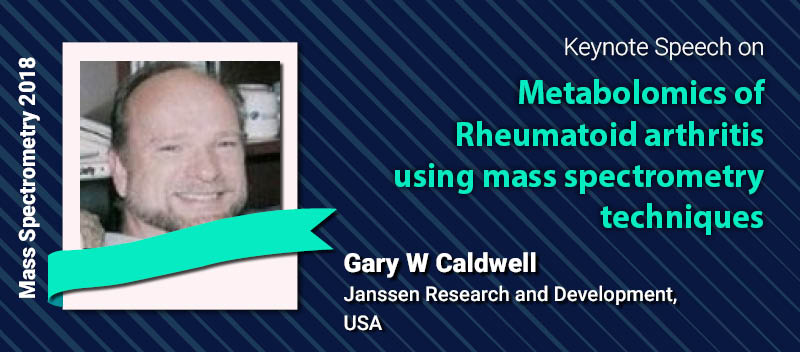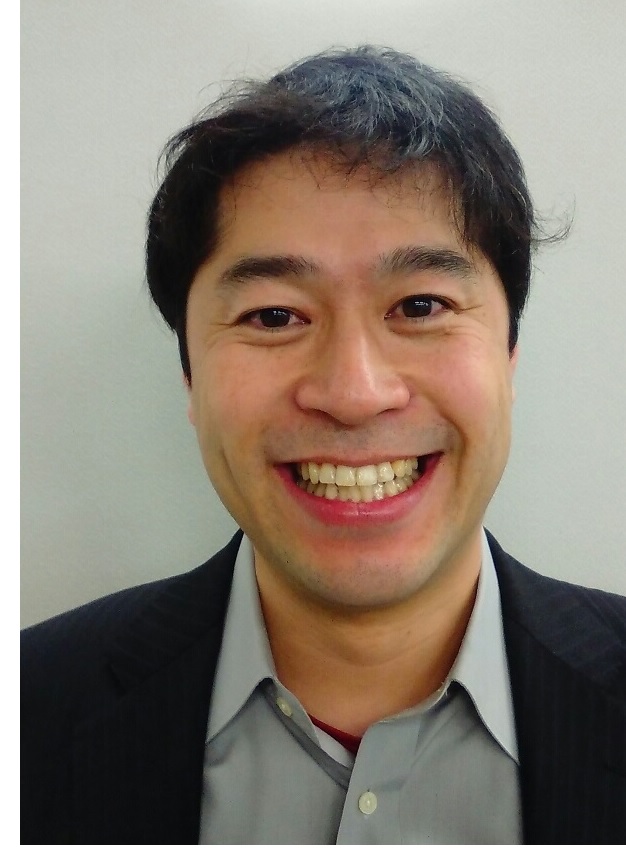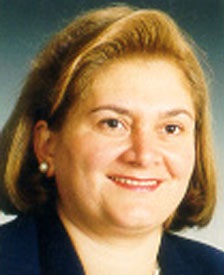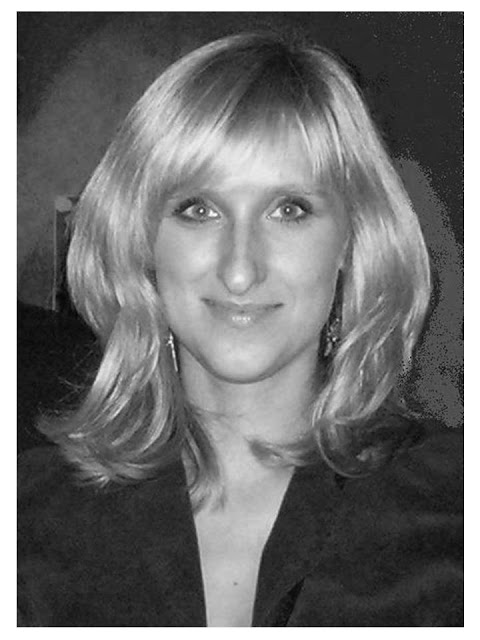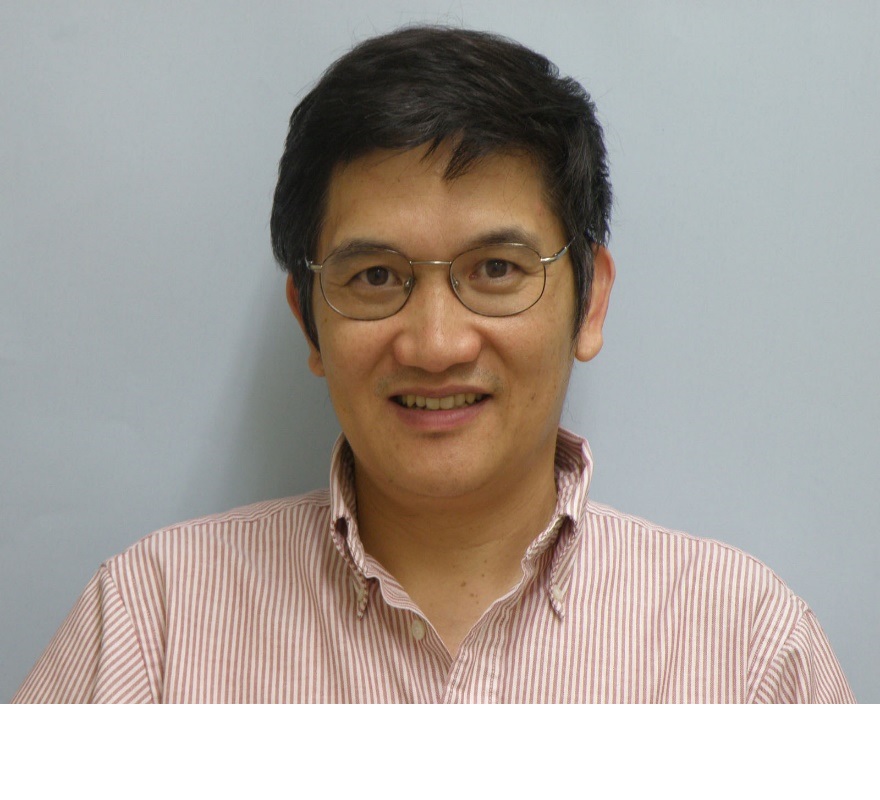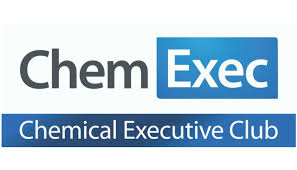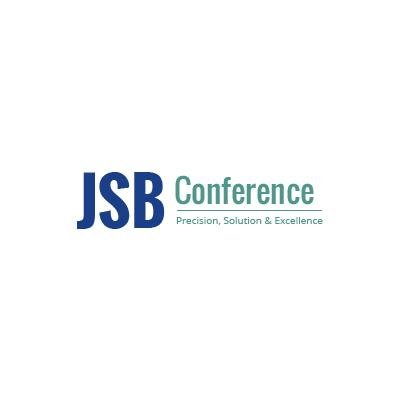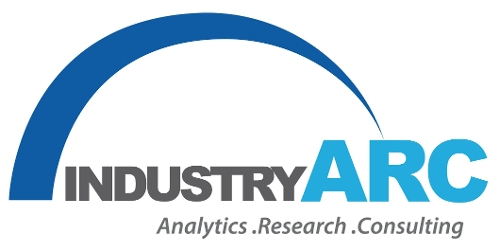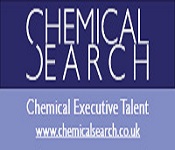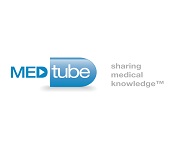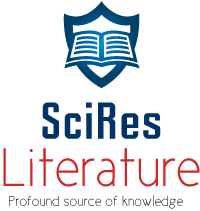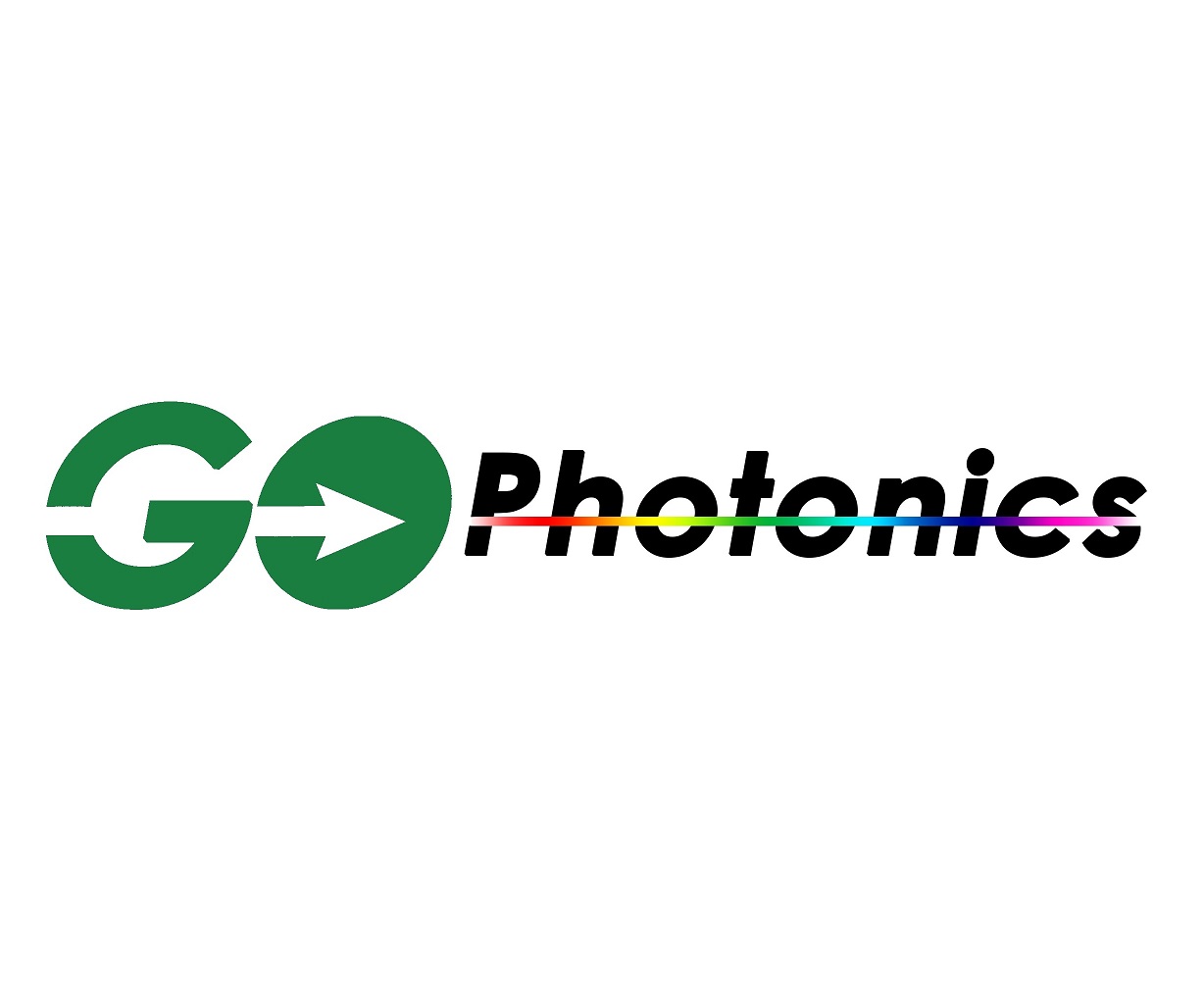Mass Spectrometry 2018
About Conference
EuroSciCon welcomes you to attend the 8th Edition of International Conference on Mass Spectrometry during March 12-13, 2018 London,UK.We cordially invite all the participants who are interested in sharing their knowledge and research in the area of Mass Spectrometry and its applications with the theme “New Innovations, Advancements and Applications of Mass Spectrometry”. Mass spectrometry is an analytical method that ionizes chemical species and sorts the ions based on their mass-to-charge ratio. The complete process involves in the conversion of the sample into gaseous ions, with or without fragmentation, which are then characterized by their mass to charge ratios and relative abundances. Mass Spectrometry technique basically studies the effect of ionizing energy on molecules. It depends upon chemical reactions in the gas phase in which sample molecules are consumed during the formation of ionic and neutral species.
Mass Spectrometry is a powerful technique with a variable uses in biology, chemistry, and physics, but also in clinical medicine and even space exploration. It is used to determine the molecular weight of compounds by separating molecular ions on the basis of their mass and charge. In life science area, Mass Spectrometry is primarily involved in the characterization and sequencing of proteins and recognized diagnostic biomarkers for treatment. The global Mass Spectrometry market is categorized based on various technologies and by applications. International Conference on Mass Spectrometry 2018 mainly focuses on New Advances and Developments in Mass Spectrometry, Chromatography, Environmental Analysis, Electrophoresis, Forensic analysis, Advances in Separation techniques, Ionization techniques, Mass Spectrometry applications in Pharmaceutical industry and Clinical diagnostics and Mass Spectrometry technology’s include Tandem Mass Spectrometry, Protein Mass Spectrometry, Analytical Mass Spectrometry, Molecular Mass Spectrometry, Miniature Mass Spectrometry and others.
Sessions/Tracks
Track 1: New Advances and Development in Mass Spectrometry
New Mass Spectrometry (MS) techniques, all things considered known as information free investigation and hyper response checking, have as of late developed. The investigation of peptides produced by photolytic assimilation of proteins, known as base up proteomics, fills in as the reason for a significant number of the protein explore attempted by Mass Spectrometry (MS) research facilities. Revelation based or shotgun proteomics utilizes information subordinate obtaining . In this, a half and half mass spectrometer first plays out a review check, from which the peptide particles with the power over a predefined limit esteem, are stochastically chosen, segregated and sequenced by item particle filtering. n focused on proteomics, chose natural Monitoring (ERM), otherwise called numerous response checking (MRM), is utilized to screen various chose antecedent part moves of the focused on amino acids. The choice of the SRM moves is regularly ascertained on the premise of the information obtained beforehand by item particle examining, store information in general society databases or in light of a progression of observational standards foreseeing the Enzyme structure destinations.
Track 2: Mass Spectrometry Applications
Mass Spectrometry is an analytical method utilized to quantify known materials, to determine unknown compounds within a sample, and to demonstrate the structure and chemical properties of different molecules. The complete process involves in the conversion of the sample into gaseous ions, with or without fragmentation, which are then characterized by their mass to charge ratios and relative abundances. Mass Spectrometry technique basically studies the effect of ionizing energy on molecules. It depends upon chemical reactions in the gas phase in which sample molecules are consumed during the formation of ionic and neutral species. Mass Spectrometry is a powerful technique with a variable uses in biology, chemistry, and physics, but also in clinical medicine and even space exploration. It is used to determine the molecular weight of compounds by separating molecular ions on the basis of their mass and charge.
Track 3: Mass Spectrometry Applications in Pharmaceutical Industry
The use of Mass Spectrometry in the pharmaceutical region associated with the Drug Discovery and Development process is rich and varied. Many of the initial efforts were associated with online High performance liquid chromatography-Mass Spectrometry in drug metabolism, Pharmacokinetics and Pharmacodynamics studies. There have been numerous innovative efforts to apply various mass spectrometric techniques in early drug discovery, preclinical and clinical development, as well as in Phase 0 studies using Accelerator Mass Spectrometry. Today there is a re-evaluation and refocusing on how to efficiently adopt, adapt and use modern Mass Spectrometry instrumentation in the Drug Discovery and Development process.
Track 4: Spectroscopy
Spectroscopy is the study of the interaction between matter and electromagnetic radiation. Historically, spectroscopy originated through the study of visible light dispersed according to its wavelength, by a prism. Later the concept was expanded greatly to include any interaction with radiative energy as a function of its wavelength or frequency. Spectroscopic data is often represented by an emission spectrum, a plot of the response of interest as a function of wavelength or frequency.
Track 5: Mass Spectrometry Applications in Clinical Diagnostics
Clinical Laboratories utilizes the Mass Spectrometry technology for disease screening, diagnosis of disease and metabolic disorders, identifying drug toxicity and poisoning, monitoring of drug therapy and determine advanced biomarkers. Therapeutic monitoring of immunosuppressant drugs using MS is well established. Liquid Chromatography-Mass Spectrometry has become the standard for assay of steroid hormones for diagnosis of endocrine disorders. Vitamin D analysis by Liquid Chromatography-Mass Spectrometry is widely used in the clinical laboratory today. Whereas immunoassays are unable to distinguish between 25-hydroxy vitamins D2 and D3, the Liquid Chromatography-Mass Spectrometry methodologies are able to measure these levels separately so the contribution of each to the total can be determined. The capability of measuring thyroid hormones by Tandem Mass Spectrometry was developed recently and this has overcome the issues associated with immunoassays. Triple quadrupole Mass Spectrometry is the preferred methodology for toxicology screening and for toxic drug quantitation. In newborn and prenatal screening programs, electrospray Tandem Mass Spectrometry has made possible identification of inborn errors in metabolism or genetic defects so that preventive and medical intervention can be implemented promptly to relieve or treat. The intensive research into metabolomics, the assessment of endogenous metabolites as new disease biomarkers, is another promising applications of MS, which has been demonstrated to be very well suited to discovery and clinical application of metabolite profiles . Another area of increasing interest is the use of automated MALDI-TOF MS for rapid identification of microorganisms in clinical microbiology laboratories.
Track 6: Capillary Electrophoresis
Capillary Electrophoresis–Mass Spectrometry (CE-MS) is an analytical chemistry procedure formed by the combination of the liquid separation process of Capillary Electrophoresis with Mass Spectrometry. CE-MS combines advantages of both CE and MS to provide high separation efficiency and molecular mass information in a single analysis. It has high resolving power and sensitivity, requires minimal volume and can analyze at high speed. Ions are typically formed by Electrospray Ionization, but they can also be formed by Matrix-Assisted laser Desorption/Ionization or other ionization techniques. It has applications in basic research in proteomics and quantitative analysis of biomolecules as well as in clinical medicine.
Track 7: Chromatography
Liquid Chromatography-Mass Spectrometry is a analytical chemistry process that mixes the physical separation capabilities of liquid action with the mass analysis capabilities of mass analysis. Liquid Chromatography-Mass Spectrometry may be a powerful technique used for several applications that has terribly high sensitivity and property. Usually its application is destined towards the overall detection and potential identification of chemicals within the presence of alternative chemicals. LC-MS system is used for quick and mass directed purification of natural-products extracts and new molecular entities which are necessary to food, pharmaceutical, agrochemical and alternative industries.
Gas chromatography-Mass Spectrometry (GC-MS) is an analytical method that combines the features of gas-chromatography and mass spectrometry to identify different substances within a test sample. Applications of GC-MS include drug detection, fire investigation, environmental analysis, explosives investigation, and identification of unknown samples, including that of material samples obtained from planet Mars during probe missions as early as the 1970.
Track 8: Tandem Mass Spectrometry
Tandem Mass Spectrometry explains various steps of mass selection or analysis, usually separated by some form of fragmentation. In a tandem mass spectrometer, ions are formed in the ion source and separated by mass-to-charge ratio in the first stage of Mass Spectrometry (MS). Ions of a particular mass-to-charge ratio (precursor ions) are selected and fragment ions (product ions) are created by collision-induced dissociation, ion-molecule reaction, photo dissociation, or other process. The resulting ions are then separated and detected in a second stage of Mass Spectrometry (MS2). There are different methods for fragmenting molecules for tandem MS, including electron capture dissociation (ECD), collision-induced dissociation (CID), blackbody infrared irradiative dissociation (BIRD) and infrared multi photon dissociation (IRMPD).
Track 9: Maas Spectrometry in Environmental Analysis
Mass Spectrometry (MS) is a popular technique for environmental analysis because of its ability to carry out sensitive qualitative and quantitative analysis. A number of developments, particularly in the analyzers used to separate ions based on their mass-to-charge ratio, make it increasingly useful for environmental analysis. Analyzers vary depending on their mass measurement accuracy, resolving power, acquisition speed and linearity. Analyzers like time-of-flight and orbit rap have been investigated for environmental applications. Tandem MS using hybrid analyzers is further improving MS by using two rounds of mass analysis. It lends itself to environmental analysis because it is useful for analyzing analytes in complex mixtures, or with high sample matrix background. It has been used in pesticide analysis to identify compounds like nitro phenols, which are readily water soluble and can run-off into river water and make their way into drinking water supplies
Track 10: Protein Mass Spectrometry
Protein Mass Spectrometry refers to the uses of Mass Spectrometry to the study of proteins. Mass Spectrometry is an important method for the accurate mass determination and characterization of proteins, and a variety of methods and instrumentations have been developed for its many uses. Its applications include the identification of proteins and their post-translational modifications, the elucidation of protein complexes, their subunits and functional interactions, as well as the global measurement of proteins in proteomics. It can also be used to localize proteins to the various organelles, and determine the interactions between different proteins as well as with membrane lipids. The two primary methods used for the ionization of protein in Mass Spectrometry are Electrospray Ionization (ESI) and Matrix-Assisted laser desorption/ionization.
Track 11: Ionization Techniques Mass Spectrometry
There are many types of Ionization Techniques are used in Mass Spectrometry methods. The classic methods that most chemists are familiar with are Electron Impact (EI) and Fast Atom Bombardment (FAB). These techniques are not used much with modern Mass Spectrometry except EI for environmental work using GC-MS. Electrospray Ionization (ESI) is the ionization technique that has become the most popular ionization technique. The electrospray is created by putting a high voltage on a flow of liquid at atmospheric pressure, sometimes this is assisted by a concurrent flow of gas. Atmospheric Pressure Chemical Ionization (APCI) is a method that is typically done using a similar source as ESI, but instead of putting a voltage on the Electrospray Tandem Mass Spectrometry Newborn Screening itself, the voltage is placed on a needle that creates a corona discharge at atmospheric pressures. Matrix Assisted Laser Electrophoresis is a technique of ionization in which the sample is bombarded with a laser. The sample is typically mixed with a matrix that absorbs the radiation biophysics and transfer a proton to the sample Gas-Phase Ionization.
Track 12: Forensic Analysis
Mass Spectrometry in Forensic Analysis is a technology provides a powerful tool for Forensic studies. For forensic researchers investigating their samples for unknown compounds, drug metabolites, chemicals or hazards, novel psychoactive substances that have never been previously detected or characterized. The role of Mass Spectroscopy in forensic science may be characterized as either molecular or elemental analysis. comparatively little volatile nonionic molecules found in a very sort of forensic samples may be analyzed with electron and chemical ionization of single-stage mass analyzers that give relative molecular mass and structural data. Non-polar and polar molecules and their metabolites habitually found in biological matrices along with alternative analytes of forensic interest may be determined by using Electrospray.
Track 13: Mass Spectrometry in Medicine
Mass Spectrometry in medicine is the most important area to study for the development of medicines. Mass Spectrometry is an analytic technique widely used many laboratories for the development of laboratory medicine. Various types of Mass Spectrometers are used in order to get improvements in assay performance that is occurring rapidly in areas such as toxicology, endocrinology, and biochemical genetics. Mass Spectrometry is a diagnostic system with high specificity and developing vicinity in research facility prescription. Different sorts of Mass Spectrometers are being utilized as a part of an expanding number of clinical research facilities around the globe. Mass Spectrometry has contributed altogether to the development of restorative science in late decades, especially in connection to medication advancement, in-vitro diagnostics, dietary and natural drug.
Track 14: Imaging Mass Spectrometry
Imaging Mass Spectrometry is a technology that combines most advanced analytical techniques for the analysis of biological molecules with spatial fidelity. An effective approach for imaging biological specimens in this way utilizes Matrix-Assisted Laser Desorption Ionization Mass Spectrometry. The mass-to-charge ratio of the ions are measured using a Mass Spectrometer over an ordered array of ablated spots. Imaging Mass spectrum Analysis (IMS) encompasses a spread of techniques that change the chemical imaging of analytes from atoms and little molecules to intact proteins directly from biological tissues. Imaging Mass Spectrometry is remodeling specific areas in research project with its distinctive combination of chemical and biological information. Innovations in instrumentation and imaging protocols can create this approach at several stages of the drug discovery method, as well as medical target screening and evaluating the distribution of drug and drug metabolites in cells and tissues.
Track 15: Analytical Chemistry
Analytical Chemistry is the science of obtaining, processing, and communicating information about the composition and structure of matter. Analytical Chemistry studies and uses instruments and methods used to separate, identify, and quantify matter. In practice separation, identification or quantification may constitute the entire analysis or be combined with another method. Separation isolates analytes. Qualitative Analysis identifies analytes, while Quantitative Analysis determines the numerical amount or concentration. Analytical chemistry consists of classical, wet chemical methods and modern, instrumental methods. Classical qualitative methods use separations such as precipitation, extraction and distillation. Identification may be based on differences in color, odor, melting point, boiling point, radioactivity or reactivity. Classical quantitative analysis uses mass or volume changes to quantify amount. Instrumental methods may be used to separate samples using Electrophoresis or field flow fractionation. Then Qualitative and Quantitative analysis can be performed, often with the same instrument and may use light interaction, heat interaction, electric fields or magnetic fields . Often the same instrument can separate, identify and quantify an analyte. Analytical chemistry is also focused on improvements in experimental design, chemo metrics, and the creation of new measurement tools. Analytical chemistry has broad applications to forensics, medicine, science and engineering.
Track 16: Miniature Mass Spectrometer
Miniature Mass Spectrometer is a type of Mass Spectrometer which has small size and weight and can be understood as a portable or handheld device. On the other hand, a lab-scale Mass Spectrometer weighs hundreds pounds and costs from a few hundred thousand to a million dollars. One of the purposes of producing MMS is for in situ analysis or to bring the lab to the sample with simple operation so that non-professional personnel like physicians at the bedside, fire fighters in a burning factory, food safety inspectors in a warehouse or at the airport checkpoints etc. can use at ease with cheaper cost. Although, reducing the size of MS leads to a poorer performance of a MS, MMS is designed to maintain sufficient resolutions, detection limits, accuracy and especially the capability of automatic operation which are suitable for most of the specific task applications.
Welcome message
Dear Colleagues,
As a Responsible Person of Analytical and Pharmacokinetic Unit at Clinical Pharmacology Department, “Hospital Universitario de la Princesa” (Madrid, Spain) I had a great opportunity to welcome you to the 8th Edition of International Conference on Mass Spectrometry, which is going to be held in March 12-13, 2018 in London, England. This prestigious meeting focuses on new innovations, advancements and applications of Mass Spectrometry.
Mass Spectrometry, initially developed in the field of physics in the ninetieth century, is nowadays one of the most used techniques in analytical chemistry. The emergence of more sophisticated mass spectrometry based technologies, characterized by short time of analysis, more sensitive quantification and 3D imaging, led to discover new substances, metabolites and precise quantification of newly discovered compounds. It was applied to space exploration, isotope dating and tracing, protein characterization, as well as pharmacokinetics. These are only some of the immense examples of Mass Spectrometry applications. Moreover, the recent mass spectrometers tend to be smaller, faster and more sensitive, which lead to more diverse applications.
8th Edition of International Mass Spectrometry Conference aims to bring together prominent researchers, academic scientists, and research scholars to exchange and share their achievements in all aspects of Mass Spectrometry. Sharing ideas on method innovations, new applications and advances is the most exciting part of science and helps to accelerate scientific progress.
I would like to express my personal respect to all researchers for attending the conference and therefore making this field of science to be in continuous development. Please receive my warmest welcome to this excellent meeting on Mass Spectrometry. I would like to invite you to take advantage of the great city of London as well and enrich your stay with a short touristic visit.
Sincerely,
Aneta Wojnicz, PhD
Clinical Pharmacology Department
Hospital Universitario de la Princesa
Spain
Market Analysis
Mass Spectrometry is an analytical technique used to determine the molecular weight of compounds by separating molecular ions on the basis of their mass and charge. Continuous technological advancement have led to the growth in the application of Mass Spectrometry. Mass Spectrometry has a myriad of applications in biology, physics, chemistry, clinical medicine and space exploration. The growing array of applications of Mass Spectrometry is driving the global Mass Spectrometry market. The global Mass Spectrometry market on the basis of application has been segmented into pharmaceuticals, biotechnology, industrial chemistry, environmental testing, food & beverage testing and others. Pharmaceutical application segment dominated the global Mass Spectrometry market due to factors such as rising usage of Mass Spectrometry in drug discovery, drug-drug interaction and other pharmaceutical and clinical medicine applications. Biotechnology and food & beverage testing are expected to be the fastest growing segment due to rising usage of Mass Spectrometry techniques in rapid microbiology testing of food and beverages and other industrial microbiology testing which would further fuel the growth of Mass Spectrometry market during the forecast period. On the basis of platforms, the Mass Spectrometry market is segmented into Hybrid Mass Spectrometry and Single Mass Spectrometry. The Hybrid Mass Spectrometry segment is further divided into triple quadrupole, quadrupole TOF, and Fourier Transform Mass Spectrometry (FTMS). While single Mass Spectrometry is further sub-segmented into Time-of-Flight (TOF) MS, Orbitrap MS and Quadrupole The hybrid Mass Spectrometry segment held the largest share in the global Mass Spectrometry market by platform. The demand for Mass Spectroscopy systems is rising due to the expanding applications in life sciences and pharmaceutical industries as wells as the substantial demand from the chemical and petrochemical industries. Moreover, the advent of these systems in tandem with chromatography techniques such as Gas Chromatography/Mass Spectrometry (GC/MS), and Liquid Chromatography/Mass Spectrometry (LC/MS) has resulted in their widespread adoption.
According to the latest reports “Mass Spectrometry Market – (Platform Type – Hybrid Mass Spectrometry: Triple Quadrupole Mass Spectrometry; Single Mass Spectrometry: Time-of-Flight (TOF) Mass Spectrometry, Orbitrap Mass Spectrometry, Quadrupole; Others ; Application Type – Pharmaceutical, Biotechnology, Industry Chemistry, Environmental Testing, Food & Beverages Testing and Others); Market Growth, Future Prospects and Competitive Analysis, 2017-2025” the market was valued at USD 5.3 Bn in 2015, and is expected to reach USD 10.5 Bn by 2025, expanding at a CAGR of 7.7% from 2017 to 2025.
In terms of geographic, North America rules the International Mass Spectrometry business. This is due to increased government expenditure in biotechnology and biomedical areas. In addition, increased research in the field of proteomics is also supporting in the growth of Mass Spectrometry in the region. The United States represents the massive business for Mass Spectrometry procedures followed by Canada in North America. In Europe, France, Germany, Italy, Spain and the U.K. holds major share of Mass Spectrometry market. However, Asia is expected to show huge growth rates in the next five years in worldwide Mass Spectrometry business. This is due to many companies constructing their manufacturing and research facilities in the region. In addition, increasing number of meetings and exhibitions by manufacturing companies to promote Mass Spectrometry technology is also contributing in the growth of mass spectrometry business in the region. India japan and china are expected to be the fastest growing Mass Spectrometry markets in Asia. The key companies operating in the global Mass Spectrometry market include Danaher Corporation, Shimadzu Corporation, Waters Corporation, Thermo Fisher Scientific Inc., Bruker Corporation, Endress+Hauser Inc, LECO Corporation, Agilent Technologies Inc., PerkinElmer Inc., Dani Instruments S.p.A, Protea Biosciences Group Inc, Microsaic Systems PLC, Jeol USA Inc., and Elico Ltd. The Global Mass Spectrometry market witnesses high competitive intensity as there are many big and small firms with similar product offerings. These companies adopt various strategies (collaborations, acquisitions, new product launches and geographic expansions) to increase their market shares and to establish a strong foothold in the global market.
Scope of the Report:
Mass Spectrometry market into the following segments:
Mass Spectrometry Market, by Platform
Single Mass Spectrometry
Quadrupole
Time-of-flight (TOF)
Ion trap
Hybrid Mass Spectrometry
Triple Quadrupole
Quadrupole TOF
Fourier Transform Mass Spectrometry (FTMS)
Others (Magnetic Sector, Portable MS, and Inductively Coupled Plasma Mass Spectrometry
Mass Spectrometry Market by Application
Pharmaceuticals
Biotechnology
Industrial Chemistry
Environmental Testing
Food & Beverage Testing
Others
Mass Spectrometry Market by Region
North America
USA
Canada
Europe
Germany
UK
Spain
Italy
France
Japan
China
India
Asia Pacific
Learn More
Top Mass Spectrometry Universities Worldwide:
Mass Spectrometry Universities:
University of Maryland | University College London | University of Minnesota | Imperial college of London | Oregon State University | University of Lowa Wake | Forest University | Penn State College | Boston University | Trinity College | Hunter College | King College Old Dominion University | University of Calcutta | University of Exeter | Baylor College | University of Leicester | University Of Montana | Swansea University | Lycoming Colleges | National College | Univer

